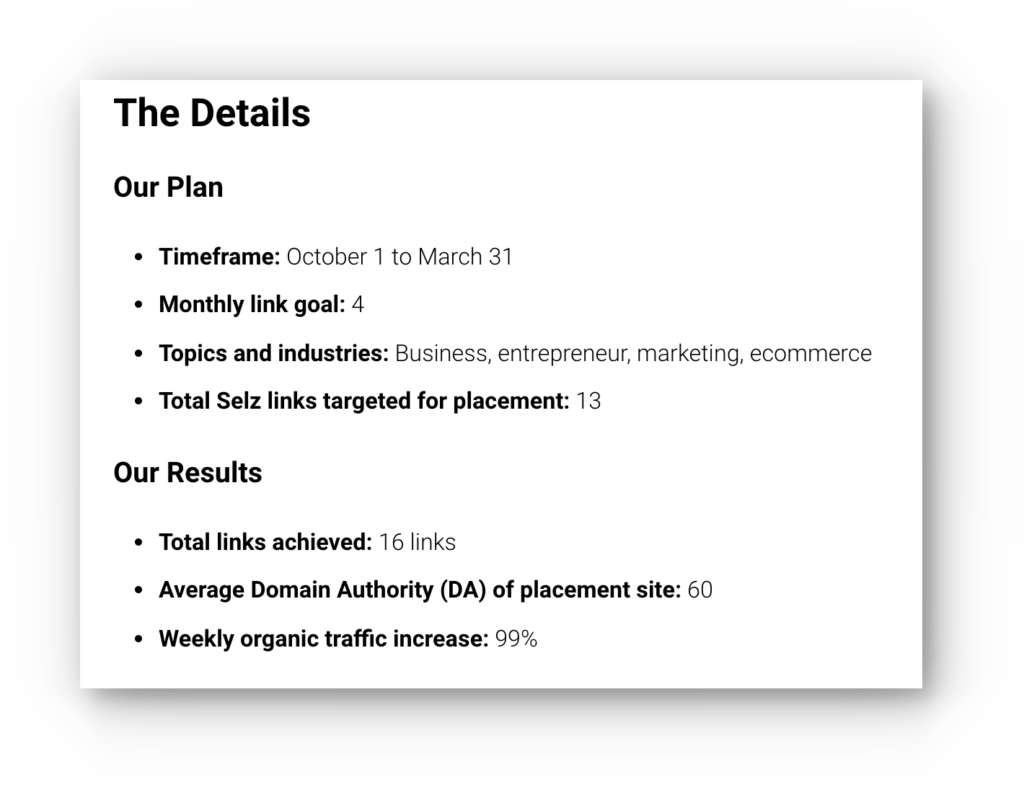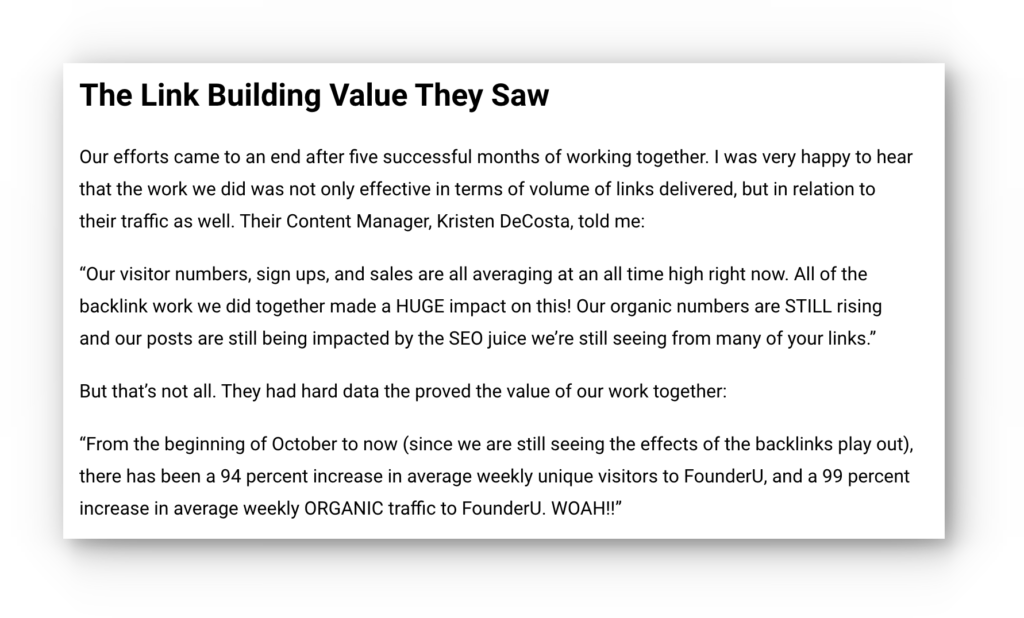Part of the marketing team’s job is to provide sales support, helping the sales team sell your products and services. While there are many ways to support the sales team with marketing assets and copy, one piece of content that provides value to the company as a whole, while also empowering the sales team, is a marketing case study.
This is especially valuable in the B2B space, where buyers face a lengthier and increasingly complex decision-making process. According to Demand Gen’s 2018 B2B Buyers Survey report, 45 percent of buyers are spending more time researching compared to the past year, and there can be up to six people involved in the purchase process.
Marketing case studies serve as both a powerful piece of content for the marketing team, but also as a resource for the sales team and a messaging tool for executives as well.
More importantly, according to CMI’s 2020 B2B Content Marketing Benchmarks, Budgets, and Trends report, B2B marketers rated case studies as the second-highest performing content type when it comes to converting leads, second only to in-person events, which of course are not relevant during COVID. What’s more, 69 percent of B2B marketers used case studies in the past year.
Don’t just create a case study to create it, however. Use these ideas and tips to ensure the content is able to support sales while also promoting your brand and business.
Keep Reading: 5 Tips to Drive More eCommerce Sales From Your Blog
Show Your Product or Service in Action
Perhaps you offer a very specialized product or service to a niche audience, and prospects can’t understand how they’d benefit. A marketing case study outlines your business model, lists the benefits of your product or service, as well as provides personalized messaging that speaks directly to your target audience.
Most importantly, when done correctly, a prospect can see how your product or service will serve their business if you can demonstrate a proven success rate and the ROI they can expect.
Improve Sales Support
Data from Conductor shows that those who consume early-stage educational content are 131 percent more likely to convert, so get this in the hands of your sales team at the start of their engagement with a prospect. They can reference it both in conversation and via email, allowing the lead to dive deeper and share the content with other decision-makers in the company.
Provide Product or Service Validation
Case studies that include direct quotes and reviews from clients provide valuable testimonials that buyers and decision-makers crave. According to that same Demand Gen report, 62 percent of buyers want vendor-focused content such as case studies and product datasheets. Another survey of B2B decision-makers found that 41 percent rate case studies and testimonials as an important variable when evaluating potential providers.
Improve Sales Support
Don’t just choose any testimonial to include in your case study. Work with your sales team to determine which testimonials best answer questions leads and prospects typically have. This way gives them a chance to mitigate those questions up front, rather than have to repeat the same response over and over or having to dig for the same testimonial each time the question comes up.
Set Yourself Apart From the Competition
A strong marketing case study proves that your company isn’t just talking the talk, but that you can deliver on your promise. While there are many ways to separate yourself from the competition with results, the Demand Gen report found that, when it comes to selecting a vendor, 75 percent of buyers confirmed they choose a firm with content that shows ROI.
Improve Sales Support
Start with competitor research to get a feel for the case studies and testimonials your competitors are using. What stats are they referring to? What features or areas of ROI are they highlighting? Use this to create more personalized and compelling content. Find areas where you can fill in gaps with your unique offering or client experiences and build your case studies around that.
Keep Reading: How to Do a Competitor Analysis for Content Marketing
Build SEO
If your case study is un-gated, and available as a blog post or article on your site, it is just another piece of content that can boost your SEO. This gives you another opportunity to drive targeted organic traffic through high-value keywords, which acts as another source of leads to fill your sales teams’ pipeline.
By nature, your case studies will include keywords related to your industry and target audience as you describe your client and services. See below for an example. My social media case study includes the key phrase “social media coaching” several times.
If you want to target a specific keyword related to your services or product, it can often be easier to do with a case study than a standard blog post.
Free Download: Quick and Easy Keyword Research Guide
6 Steps to Create a Marketing Case Study
Once you’re ready to create case studies for your organization, follow these six steps to ensure you build a piece of content that supports sales and your marketing efforts.
- Create a formalized process to collect testimonials: Automate the process of collecting testimonials by sending an email survey to all clients on a regular basis. Include an opt-in that gives you permission to share feedback and approach clients with the best results or most positive reviews for a formal case study—it’s best practice to get permission from them first. Keep all these testimonials in one place so they’re easy for each team to access.
- Gather data: Remember that numbers speak louder than words. Put together a list of all the hard data that shows your client’s success; think sales figures, conversion rate increase, subscriber increase, etc. You can even start your case study with some clear data points that set the scene like we did with this link building case study:

- Tell a story: Translate your data into a compelling story. Even though your case study is a data-heavy sales tool, you can still write a narrative so that it’s more engaging for your audience. See how I crafted my link building case study into a story, which also included a few more “wow” stats in the copy.

- Optimize: Don’t forget to optimize your case study in two ways. Include a CTA to lead prospects into your sales funnel and optimize your content for SEO, which means basing the content on a high-volume, low-competition keyword. Get your SEO right with our blog SEO guide.
- Promote: Once published, share your case study as you would a blog post, including sending it to any current leads or prospects, in addition to sharing it on social media. To increase traffic and get more eyes on this valuable sales tool, check out our article with ten ways to promote new content.
Keep Reading: 5 Non-Sales Performance Metrics for Your B2B Blog
Use Marketing Case Studies to Support Sales
Start celebrating your client wins while driving more conversions and organic traffic. Marketing case studies are the perfect sales support tool while acting as fresh content for sharing and supporting your marketing efforts as well. The great news is, even just one high-quality case study is all you need to start leveraging it as a sales and marketing tool—so invest the time now and let the results roll in.



